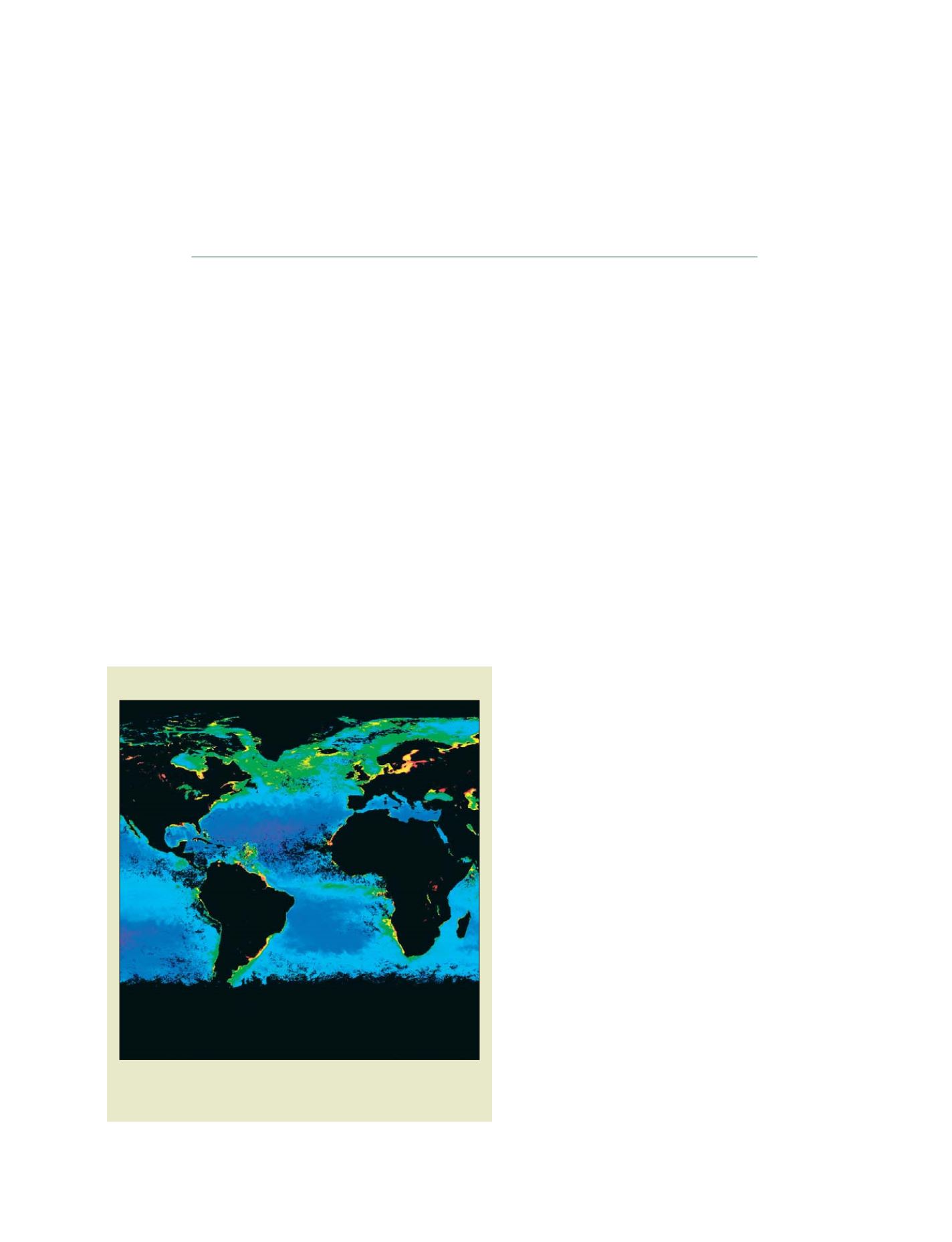

[
] 267
The green ocean –
observations of marine biodiversity
D. James Baker, David Farmer and Kristen Yarincik,
Scientific Steering Committee, Census of Marine Life
F
rom space, a green ocean appears where the chlorophyll
of plankton reveals productive areas. But most ocean life,
although a vital and connected part of our living planet,
is largely hidden from view. Observations of marine biodiver-
sity – from the surface to the bottom of the ocean – are thus a
central concern of GEO. Fish have been an essential food source
since prehistoric times. Marine life provides much of the oxygen
we breathe and removes a significant fraction of the atmos-
phere’s greenhouse gases. Despite years of research on fish and
marine mammals, their feeding, breeding and migration
patterns remain a mystery to us today. Our ignorance is even
deeper when it comes to non-commercial species including the
abundant marine microbes and viruses, most of which have yet
to be identified.
This ignorance contributes to deep uncertainty about
human impacts on the ocean. Coastal pollution, the
massive harvest of marine resources using modern tech-
niques and, at ocean scales, the evolving chemical and
physical properties associated with global warming, all
affect the ocean and its life in unpredictable ways. We
are only starting to learn about the interconnectedness
of the marine web of life; but the more we learn, the
better we understand that when something happens at
one level or to one species, other species are impacted,
throughout the food web. It is this interconnected char-
acter across the diversity of life that motivates our need
to understand what lives in the ocean. Exploring and
cataloguing this diversity is the central theme of the
Census of Marine Life (the Census). The Census is a
coordinated international effort to quantify what is
known and to identify the unknown and the bound-
aries of what can be known about life in the world
ocean.
The Census is the first international programme to
systematically study the global ocean from a biological
standpoint. It is providing information, technologies and
approaches for critical understanding and management
of marine ecosystems. The Census is identifying threat-
ened species and important breeding areas and is helping
authorities develop effective strategies for the sustain-
able management of marine resources. In short, it is both
making scientific discoveries and helping society deal
with the multiple threats to the ocean from human activ-
ity. The Census asks: what lived; what lives; and what
will live in the oceans? By combining what we learn
about historical trends with our knowledge of what lives
there now, we can begin to formulate an answer to the
core question of what will live in the ocean of tomor-
row. Thus the Census scientific programmes and global
database system are a critical contribution to the Global
Earth Observing System of Systems (GEOSS).
What is the Census?
The Census of Marine Life is a growing global network
of more than 2,000 researchers in more than 80 nations
engaged in a ten-year initiative to assess and explain the
diversity, distribution, and abundance of marine life in
the oceans. The Census uses field projects, new tech-
The Green Ocean
Chlorophyll concentration evident in northern seas and coastal regions
(indicated by colours from green to red) as measured by the NASA satellite
instrument MODIS on Aqua (1 May-1 June 2007)
Courtesy NASA Goddard Space Flight Center
S
OCIETAL
B
ENEFIT
A
REAS
– B
IODIVERSITY
















